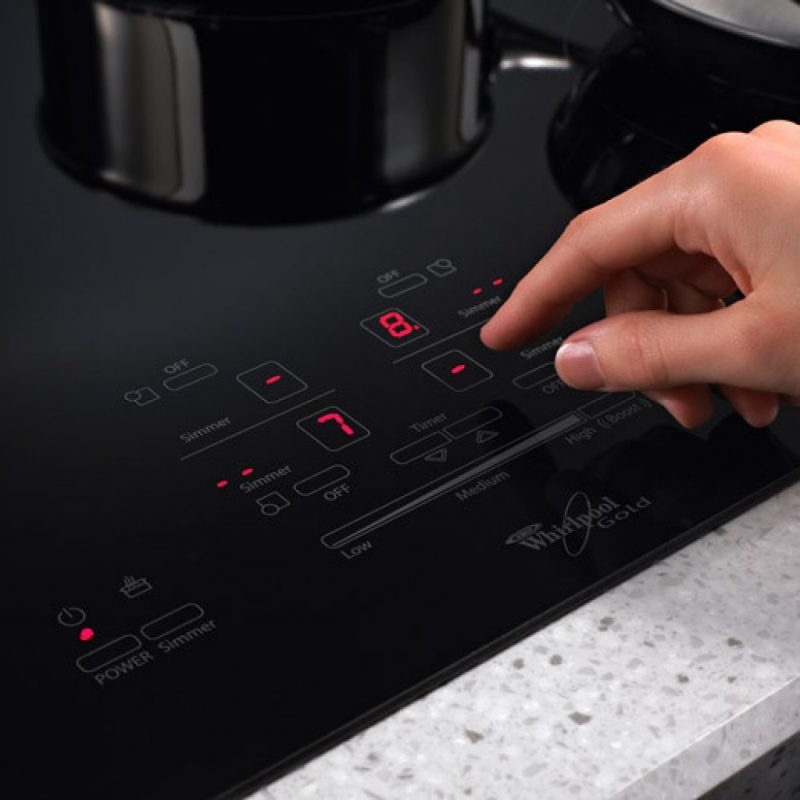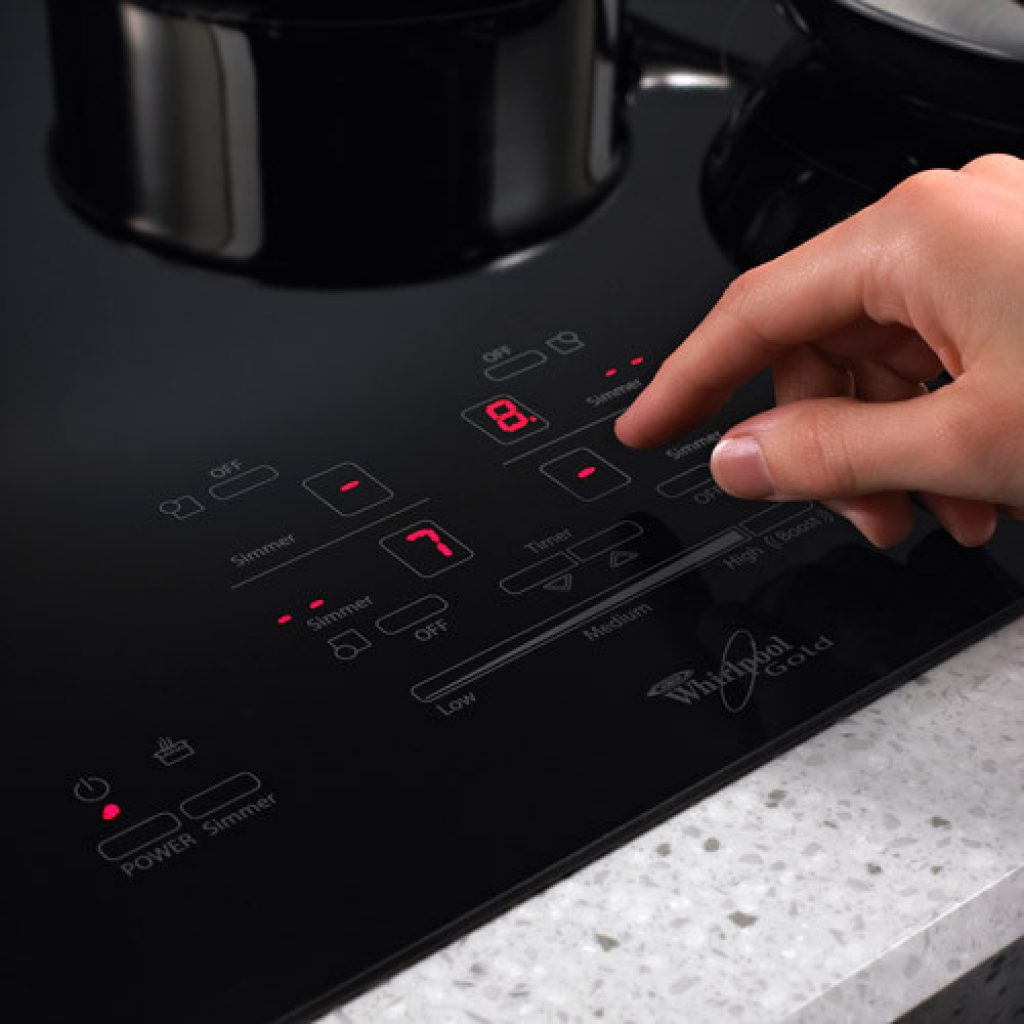

Image Credit: Amazon.com
There is this one thing which confuses most of the buyers of an induction cooktop online. Most of the queries are about the voltage requirement, power consumption, and temperature settings. So we decided to do a detailed analysis of this matter and present to you with the answers.
Cooktops today can be found in different sizes, designs, and features in the market. Some models come with only one burner, and some may have four or five. So the voltage requirement also differs from model to model. Have a look at the following section to get a clear view about all these.
Voltage Requirements
Each cooktop may need a different voltage and each country may have a difference in voltage distribution. Today most of the EU countries are using 230 volts as their voltage distribution. But the case is not similar to Japan, Canada, and the United States.
They use 100 – 120 volts as their standard voltage. Almost all of the inductions are made as compatible with the common standard of voltage distribution. Every company builds their inductions as per the standards of the country they are doing business in.
So whichever country are you living in, just be sure to check the voltage statement before buying and you are good to go? But one thing you should not forget is the required circuit. Normally, a single burner induction needs 15 amps as they use 1200-1800 watts.
But if you are choosing a model with four or five burners, the wattage will increase and subsequently you will need a minimum of 40 – 50 amps.
Power Consumption
Induction cookers are famous for their heat consistency and energy efficiency. The best inductions in the market also have a ‘speed boost’ or ‘power booster’ mode which enables you to cook your food twice as faster as with regular setting.
If you have a look at the survey of The US Department of Energy, you will see that the energy efficiency of an induction is as high as 84% compared to non-induction electric cooker with 74% and gas cooktops with only 44%. Since induction cooktop works faster than other mediums and is more energy efficient, it won’t cost you more than cooking on electric or gas burners.
Temperature Settings
Each induction cooker provides you with various temperature settings to suit all the cooking styles you want. If you have a keen interest in cooking, it is important for you to check the temperature settings of the cooktops before buying one.
Induction cookers may offer cooking temperatures between 500 watts and 4000 watts. It is focused on your cooking needs from searing to simmering. Another interesting thing is that the temperature does not fluctuate like other mediums.
It will constantly continue to deliver the heat level you chose. This will give you precision in your cooking. All the good models in the market have LED display panels to show you the heat level it is providing. Cooking can never be fun like this!
Induction Cooktop vs Electric Cooktop: Power Consumption-
Mechanism of Induction & Electric Cooktops: Electromagnetic radiation vs Infrared energy:
| Induction cooktop | Electric cooktop |
| ❖ Powered by electricity.
❖ Uses copper coil underneath the cooking surface ❖ Electric current through the coil generates a magnetic field ❖ Magnetic field causes electrons to gain momentum, hence creating heat |
❖ Powered by electricity.
❖ Uses metal coil underneath the cooking surface ❖ Electric current heats up coil that transfers heat through the cooking surface and onto the base of the cookware using infrared energy
|
Power consumption:
- Induction cooktops heat up right off the bat and cool down just as quickly, providing a safer and faster cooking environment than electric cooktops. As a result, the power consumed is lesser because the food is cooked faster and the heat lost is significantly lesser.
The time it takes:
- Water boils in almost half the time on an induction cooktop and the heating element cools down in a quarter of the time it takes on an electric cooktop.
- Food is cooked faster on an induction cooker because the heat is generated with greater efficiency.
- Induction cooktops have an electromagnetic coil beneath the cooking surface. When electricity flows through this coil, a magnetic field is formed. The field fluctuates through the bottom of the cookware and produces current. Since the cookware resists electricity, the power transforms into heat. As a result, the heat transfers to the food from the base of the cookware and it begins cooking.
- In contrast, electric cooktops use an exposed coil under the glass surface, and the coil needs to be heated first. Once the element becomes hot enough, the heat energy is then transferred to the cookware’s base. It is this need of an intermediary that makes electric cookers slower than induction.
The heat that’s lost:
- When it comes to induction, the heat is always transferred to the cookware directly and as a result, there’s minimal heat lost to the environment. However, with electric cooktops, both the cooking surface and the air surrounding it are heated. Therefore, a lot of the original heat energy escapes and is wasted. Hence, it takes more time to cook on an electric cooker.
- Moreover, induction cookers produce heat that is only present in the cookware, therefore, none is lost when the cookware is removed. That is not the case with electric cooktops; when the cookware is removed, the heat left on the cooking surface is always lost.
FAQ
- What is the power consumption of an induction cooker?
One unit of electricity equals the number of kilowatts used per hour. Therefore, the formula is Wattage (W) multiplied by Hours (H) used/ day divided by 1000.
If your induction cooktop model has a maximum level of 2000 watts and it is used for an hour, the total consumption will be 2 units of electricity.
- Induction cooktop power requirements
All induction cookers have different power requirements, however, larger ones with multiple burners require a minimum of 40-50 amps on a grounded 240V circuit outlet.
- Induction cooker wattage vs temperature
The temperature setting has a sensor that reads the cooktop’s heat transferred from the pan. It allows you to alter heat on and off.
The wattage settings work much like a gas stove. You have ‘low’ to ‘high’ and the heat is passed through continuously for you to control its intensity with the hob. The cooktop can be used by both temperature and wattage settings.
- How many amps does an induction cooktop use?
All induction cooktops have different power requirements. But most, in general, require 20 to 42 amps on a minimum.
- Induction vs Electric power consumption
For a clear picture, consider an example. An electric cooktop uses 320-watt hours to boil 2 liters
of water, whereas, an induction cooker uses only 225-watt hours to do the same.
